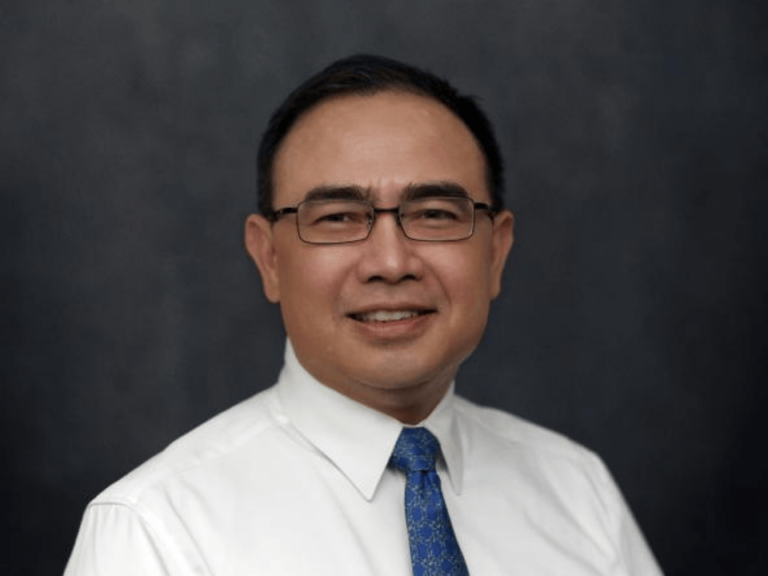

When Marsha B. Henderson, former FDA Associate Commissioner of Women’s Health (1998-2019), sat down for an oral history interview upon her retirement from the agency, she could not have foreseen becoming party to a government digital purge 7 years later.
Over the past week, the Trump administration has been busy at work deleting government webpages containing a list of banned words that include “diverse”, “gender”, and “women,” The Washington Post reported. One of those pages was an archive of FDA oral histories, with 302 records—including Henderson’s.
A story about the deleted webpages appears in this issue.
It is the mission of the Cancer History Project to find and preserve archives that would otherwise be lost. It is also Black History Month. In an effort to remove this important document from the history of FDA, the Trump administration has instead shone a spotlight on Henderon’s work on health equity during her tenure in the FDA Office of Women’s Health.
Henderson is a Washington, DC, native, and grew up in a middle class Black neighborhood shortly after the city was desegregated. As a teen, she was bussed to a white neighborhood every day to attend a public high school, where her teachers were proud members of the Daughters of the American Revolution.
“We were assigned to school in Georgetown, even though it was a great distance from us, because they decided there was a certain type of middle class African American that they wanted in their schools, and so that was a challenge,” Henderson said.
“We all went as a neighborhood to Gordon Junior High School and Western High School in Washington, DC, and most of our teachers were Daughters of the American Revolution. They wore their pins. They were very proud of their experience.”
When her mother, a social worker who worked for the city helping homeless families, was diagnosed with breast cancer, she decided to attend Howard University in order to stay close to home.
“I was going to go to Sarah Lawrence College,” Henderson said. “But because my mother really was then terminally ill, they allowed me to go to Howard University, and I was going to transfer my credits, except I had never been to an African American school, and I loved it.”
Freshman year, after her mother died, Henderson decided to stay at Howard.
“I was exposed to every superstar in the African American community, whether it was a Muhammad Ali, or a Stokely Carmichael, or a Malcolm X, or Martin Luther King, or great authors, like Toni Morrison, who taught there, or great artists, like Mailou Jones, a brilliant artist. All of them were at Howard University.”
After college, Henderson, who first became interested in healthcare following her mother’s breast cancer diagnosis, pursued a masters degree in hospital administration.
“And this is why I always tell graduate students, ‘Figure out who you are and what your passions are,’ because I decided I only liked hospitals on paper,” she said. “I didn’t care for being in a hospital.”
Henderson went on to become a career federal employee with numerous positions in public health, including in the Health Planning Office, where she managed a $10M grant portfolio that was intended to lay the groundwork for national health insurance—until President Ronald Reagan took office.
“I came in with the agenda of national health insurance coverage. And it’s interesting that as I leave it is on the cusp of demise, but, you know, it just teaches you that there are no permanent solutions. You have to continue to push for what you think is the right thing for public health,” Henderson said.
“The Reagan administration decided that that was overreach, federal overreach,” she said. “They were not in favor of national health insurance, and so the program had to be dismantled. And one of the things I had to do was to go then to those ten regions to help them archive the records.”
In 1992, a GAO report demonstrated that the enrollment of women in clinical trials was extremely low.
“Once this report was issued, and women became aware that products that they took every day, whether it was for a headache or diabetes, was tested on men almost exclusively, they became very annoyed about that, and really we hadn’t kept up with modern day contraceptive opportunities,” Henderson said.
Thanks to the work of advocates in 1993, the FDA Office of Women’s Health (OWH) was established in 1994 by congressional mandate, as part of the office of the FDA Commissioner. Henderson joined as deputy in 1998.
“This office, from its inception, has always understood that we are a direct beneficiary of women’s advocacy, so we have always listened to the voice of women, and it has served us well. It’s served the Agency well,” she said.
OWH’s work included community outreach and engagement around the 1992 Mammography Quality Standards Act (MQSA).
“It was the first time that all of the equipment had to be standardized, calibrated, based on regulations from FDA, as well as the training for those that were actually using the equipment,” Henderson said. “So, to inform women about that, this office established 1-800-4CANCER, and that was a call-in number, because as facilities became certified women wanted to know where the certified locations were in their communities.”
Both before and during Henderson’s tenure at OWH, the office developed a reputation for creative communications to target health equity:
We did a variety of things with MQSA. We targeted African American and Hispanic communities particularly, because their use of that service was low, has been identified as being very low. And so we worked with churches to get information out, and we developed a guide called Pink Ribbon Sunday.
And the PASs, again, used that and distributed that and had groups of churches around the country, and we now work with a group called Healthy Churches 2020, which has over 100,000 African American churches that use it routinely as training for churches to do the mammography-related information, and something that we learned by doing and making mistakes.
We realized that a lot of people didn’t understand that it didn’t matter whether you got your assessment in a hospital or in a moving van; all of the equipment and training is standardized so that you could be comfortable with the results, whether it’s in… It didn’t matter what kind of facility. It didn’t have to be bricks and mortar, and on and on, and encouraging women to go for mammography. And we did radio talk shows and all kinds of things during that period.
OWH outreach initiatives, including 1-800-4CANCER, even made it into Dear Abby:
“Somehow, before I got here, someone thought, let’s get Dear Abby to say that things are changing for women, and the diagnosis of breast cancer, they’re now going to be certified,” Henderson said. “So it was a question-and-answer, and that’s when she put a picture of the 1-800-4CANCER number there, and that’s how people knew to call this number.”
This started an ongoing relationship between the advice columnist and the agency.
“You don’t just go to Dear Abby. Nothing political. If it even has a hint of political, she will not accept it, and it has to be original,” Henderson said. “She only wants things from government that are a first, like an announcement.”
In addition to Dear Abby, her initiatives have been announced by Parade Magazine, Hints from Heloise, and the IRS.
During her tenure, Henderson helped define an agenda for women’s health research.
“The big thing was I wanted an agenda for the Office of Women’s Health,” she said. “We did not have a real, defined focus. We just gave out grants that said ‘Woman’ on them. And I thought the priorities should be set internally, across the Agency. So I hired an epidemiologist who had worked in both CDER and CDRH, and she led this effort.”
This became OWH’s Research Roadmap, which has funded over 400 intramural and extramural research projects.
In the past week, OWH’s research has been subject of the Trump administration’s deletions, removing the office’s archive of peer reviewed research 1994-present, and OWH’s definition of sex as a biological variable has been edited to remove a historical timeline of “key reports, policies, and other FDA actions related to sex and gender considerations.”
Reflecting on the future of women’s health research in 2018, Henderson said:
“I have been—and most people don’t know this—I’ve been asked what would be the ultimate for women’s health, and I said, ‘There’d be no Office of Women’s Health at FDA. There wouldn’t be a need for it. If everything went perfectly and smoothly and on and on, there would be no need for it.’ And as we see new offices emerging that do the things that we used to do, that’s a good sign to me, you know, to have a Patient Engagement Office, to have a Director of Women’s Health within a center, to have, you know, the things that many of our advocates want, like drug trial snapshots. Many people don’t know that that was a women’s health initiative, right?”
Henderson retired in 2019. Her full oral history, recorded Dec. 19, 2018, is available in the Cancer History Project.
This column features the latest posts to the Cancer History Project by our growing list of contributors.
The Cancer History Project is a free, web-based, collaborative resource intended to mark the 50th anniversary of the National Cancer Act and designed to continue in perpetuity. The objective is to assemble a robust collection of historical documents and make them freely available.
Access to the Cancer History Project is open to the public at CancerHistoryProject.com. You can also follow us on Twitter at @CancerHistProj, or follow our podcast.
Is your institution a contributor to the Cancer History Project? Eligible institutions include cancer centers, advocacy groups, professional societies, pharmaceutical companies, and key organizations in oncology.
To apply to become a contributor, please contact admin@cancerhistoryproject.com.









